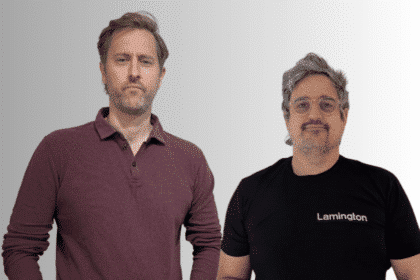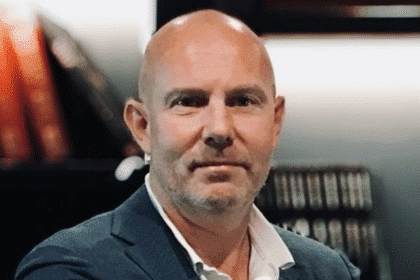In this exclusive B&T guest column, MediaCom Sydney’s digital strategy director, Duncan Jones (pictured below) argues, sure, 2016 was unpleasant; however, he says, that doesn’t mean the coming 12 months need be too… and there are plenty of lessons for brands and advertisers!
“If we understand the mechanism and motives of the group mind, is it not possible to control and regiment the masses according to our will without their knowing about it?”
When a brief lands on any strategist’s desk, their role is to find these mechanisms and motives. We coin it here at MediaCom as tapping into a connection truth – a commonality within the ‘mass’ which can be used to provoke a reaction, or as Edward L. Bernays describes above ‘to control’.
Whether it’s called psychology, neuromarketing or just general brain-prodding, the human element of advertising is what drives my passion for this industry. If I can guide a brand to tug on some heart strings or get Millennials to actually “LOL”, I can feel I’ve done a good day’s work. That being said, there is one emotion that still doesn’t sit well with me and that is when a connection truth taps into fear.
Of all the emotions, fear is certainly one that can drive a strong return of investment. There have been many studies which show that fear will top sex as a ‘go-to’ tactic to drive “a higher recall than warm emotional content”.
Such a prognosis is understandable due to the strength of fear as an innate emotion. The same chemical reaction that once saved cavemen from being eaten by a T-Rex, has now evolved to be triggered by the threat terrorism or of social exclusion. These modern day faceless fears are now broad ranging and complex, but certainly no less potent in their response. It is playing in these murky waters therefore, that I start to get nervous – with emotions like vulnerability on the line, there arises a question of advertising ethics.
With fear insights, come great responsibility
Take old mate Donald Trump as an example, who has a whole campaign built on fear. His casual branding of Obama and Clinton as ISIS collaborators within his election campaign is one which saw him less ‘tapping’ into a fear, rather swinging in on it like an orange wrecking ball.
The same can be said for Brexit with Nigel Farage and ‘Leave’ campaigners tapping into fears of immigration and misdirected funds being detrimental to the NHS, all in the name of ‘taking back control’. Regardless of whether these statements are based in truth, the sticking power of fear clearly does directly impact perceptions – a scary thing in itself.
Needless to say, 2016 wasn’t the chirpiest of years and it is taking its toll!
We see that one in six young Australians is currently experiencing an anxiety condition and 50 per cent of Millennials are choosing to block out digital advertising completely. We are a consumer increasingly exhausted of being told we are missing a trick or left cheated by foretold threats not coming to fruition.
But it is in these murky waters that I see a real opportunity, or rather, an obligation, for our industry. In 2017, we can change the language of ‘target’ audiences from an aggressive impersonal challenge and evolve it into a more human, responsible and relationship based rhetoric. This year should be the year we flip fear into fun and look to empower rather than ensnare and here’s why:
Happiness is a drug we want to share
A study in 2010 of the most-emailed New York Times articles found that people preferred e-mailing articles with positive rather than negative themes, and they liked to send long articles on intellectually challenging topics. This sharing is such that a later New York Times study showed that good news in fact travels faster and wider than bad news.
We only have to look at the carpool karaoke and pineapple pen style YouTube videos which went viral in 2016 to see that people have a craving to share pleasurable and positive content. Every day they reveal to us that they are dopamine junkies looking for another content hit and we should be advising our clients to tailor their connection strategy to match.
The prioritisation of consumer needs ahead of brand wants will see return on advertising spend paid back in dividends through earned media. Take MediaCom’s ‘Hungerithm’ campaign for Snickers as an example. By lowering the price of snickers in 7-Eleven’s nationwide to help counterbalance anger increasing on the internet, they active sought make us all a bit happier.
Why flog the horse of negativity when you can sit back and watch a positive message like this fly?
Brands who cried wolf marketing
Fear based marketing has a place when trying to create short term awareness, often saved for socially focused campaigns such as smoking prevention or driving safety awareness. However, outside this realm, we need to steer away from short term campaign mindsets and instead focus on longer term implications which a connection strategy may have for a brand.
We see brands pushing product benefit in FMCG and creating exclusivity and FOMO in luxury, but I would argue that this may not help to grow longer term positive brand association. The repetition of ‘what we need’ or ‘what we’ve missed out on’ may help to drive some spikes to sales, but has a shelf life for a brand. If you claim your brand can solve being ‘un-cool’ or ‘on trend’, it needs to come through on its promise, otherwise savvy consumers will very quickly become disenfranchised.
Fitness First’s recent switch to their ‘how fit feels’ campaign is a great example of applying long term thinking for their brand. Instead of preying on summer body muffin-top fear which would drive short term panic sweating on a treadmill, they are aiming to build an empowering mantra for their brand to maintain active memberships and consumer longevity. Even better
Turn our industry frown upside down
In an industry which looks to forge relationships between brands and consumers, I’m not sure I want to be associated with strategies whose by-product looks to make people fear being less worthy, un-cool or languishing behind a conceptualised ideal. It is this focus which has brought us to an era of ad-blocking, cynicism and stress.
Instead, we should guide brands toward ‘understanding the mechanism and motives’ which look to add positive value through understanding what people actually want and need. From this, not only will our clients benefit by standing out from the consumerist crowd shouting at people, but also our industry can shift a negative perception. By drawing a line under fear marketing, our industry will no longer be seen as seeking to ‘control or regiment the masses’ but can rather rekindle receptivity by enhancing their every day.









